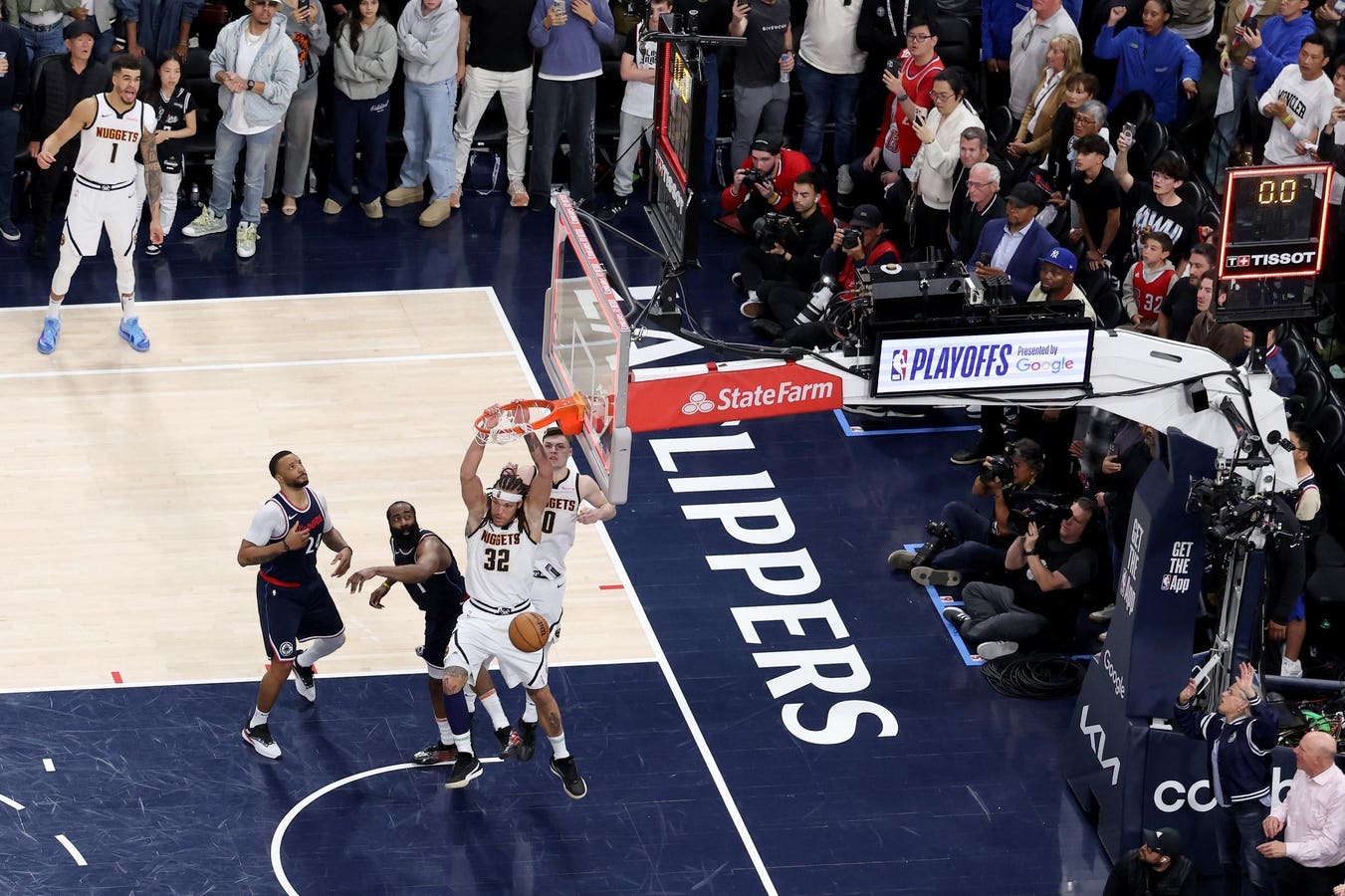AI Is Enhancing NBA Playoff Officiating

AI’s Impact on Recent NBA Games
This past weekend, both of Los Angeles’ NBA teams faced tough losses influenced by a new technology in officiating: artificial intelligence. The Sony Hawk-Eye system played a pivotal role in crucial late-game decisions that ultimately shaped the outcomes of Games 4 for both the Lakers and Clippers. While many fans and analysts praised the system for its accuracy, there is an ongoing conversation about the significant changes that AI brings to professional sports.
Key Moments in Game 4
In one of the most thrilling moments of the weekend, the Denver Nuggets found themselves tied against their opponents, the LA Clippers. With only two seconds on the clock, Nikola Jokic shot a challenging three-pointer that missed the target, but Aaron Gordon swooped in to convert it into a game-winning alley-oop. Initially, there was uncertainty about whether Gordon’s shot had been released before the buzzer went off. Thanks to the precise replay provided by the Hawk-Eye camera system, officials were able to confirm that the basket counted, ensuring Denver’s victory.
The following day, the echo of AI involvement continued in a match between the Minnesota Timberwolves and the Los Angeles Lakers. With just ten seconds left, the Lakers were hoping for a last-minute turnaround when a decision was made concerning LeBron James. After being called for a turnover against Anthony Edwards, the Timberwolves invoked their Coach’s Challenge. A review using the Hawk-Eye technology overturned the original ruling, leading to a foul call against James instead. This pivotal change allowed Minnesota to secure their win.
The Role of Sony’s Hawk-Eye in NBA Officiating
In March 2023, the partnership between Sony and the NBA was officially announced, aimed at enhancing officiating accuracy and speeding up the game. This collaboration introduced advanced 3D tracking systems into NBA arenas, utilizing high-speed cameras to collect real-time data on player movements and ball trajectories. Each player’s motion is now tracked in three dimensions, offering far more detail than the previous system, which only monitored player locations as singular points.
With the integration of Hawk-Eye technology, the realm of officiating is being transformed. AI systems like Hawk-Eye provide better clarity during crucial moments in games, thanks to their enhanced tracking capabilities.
Understanding Computer Vision
At the core of this innovation is a technology called computer vision, a branch of AI that enables machines to analyze and interpret visual data. In sports, computer vision recognizes objects such as players, referees, and balls during live-action footage. This process parallels technologies in self-driving cars, where accurate interpretation of surroundings is vital.
Cameras placed strategically around the court capture footage from various angles. This video data is fed into software programmed to identify specific elements within the scene, allowing the system to track their movements frame by frame using advanced AI models like neural networks. The precision and speed of computer vision mean that decisions can be made in real-time, offering an edge over human perception, which is often prone to bias and fatigue.
Shifting the Role of Human Judgment in Sports
The experiences from the recent NBA games show that artificial intelligence is no longer an idea of the future; it is here now, actively engaged in shaping outcomes. As the Hawk-Eye technology becomes more prevalent, leagues are increasingly relying on it to enhance game tracking and officiating. The incredible speed, accuracy, and impartiality offered by these systems raise questions about the role of human judgment within the sport. While they help referees make more accurate calls and allow fans to enjoy critical moments with clear confidence, the influence of AI suggests a deeper transformation in how fairness and accuracy are perceived in professional games. With AI continuing to reshape the landscape of sports officiating, we find ourselves on the brink of a new digital authority in athletics.






